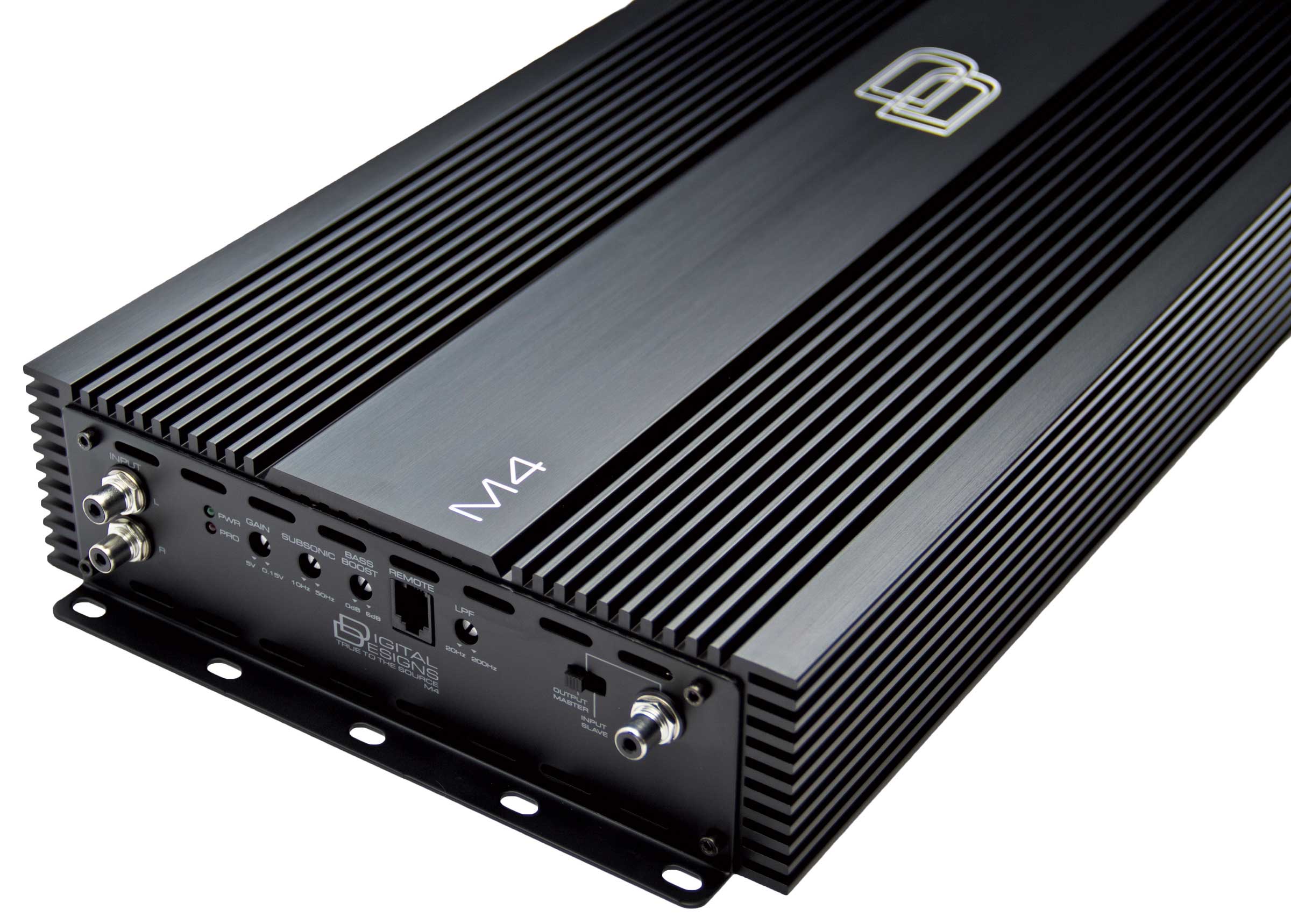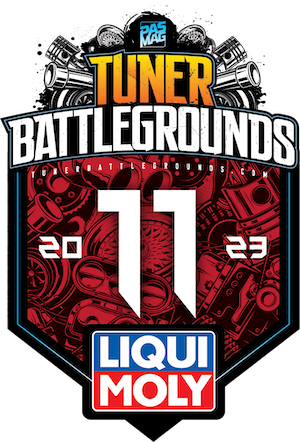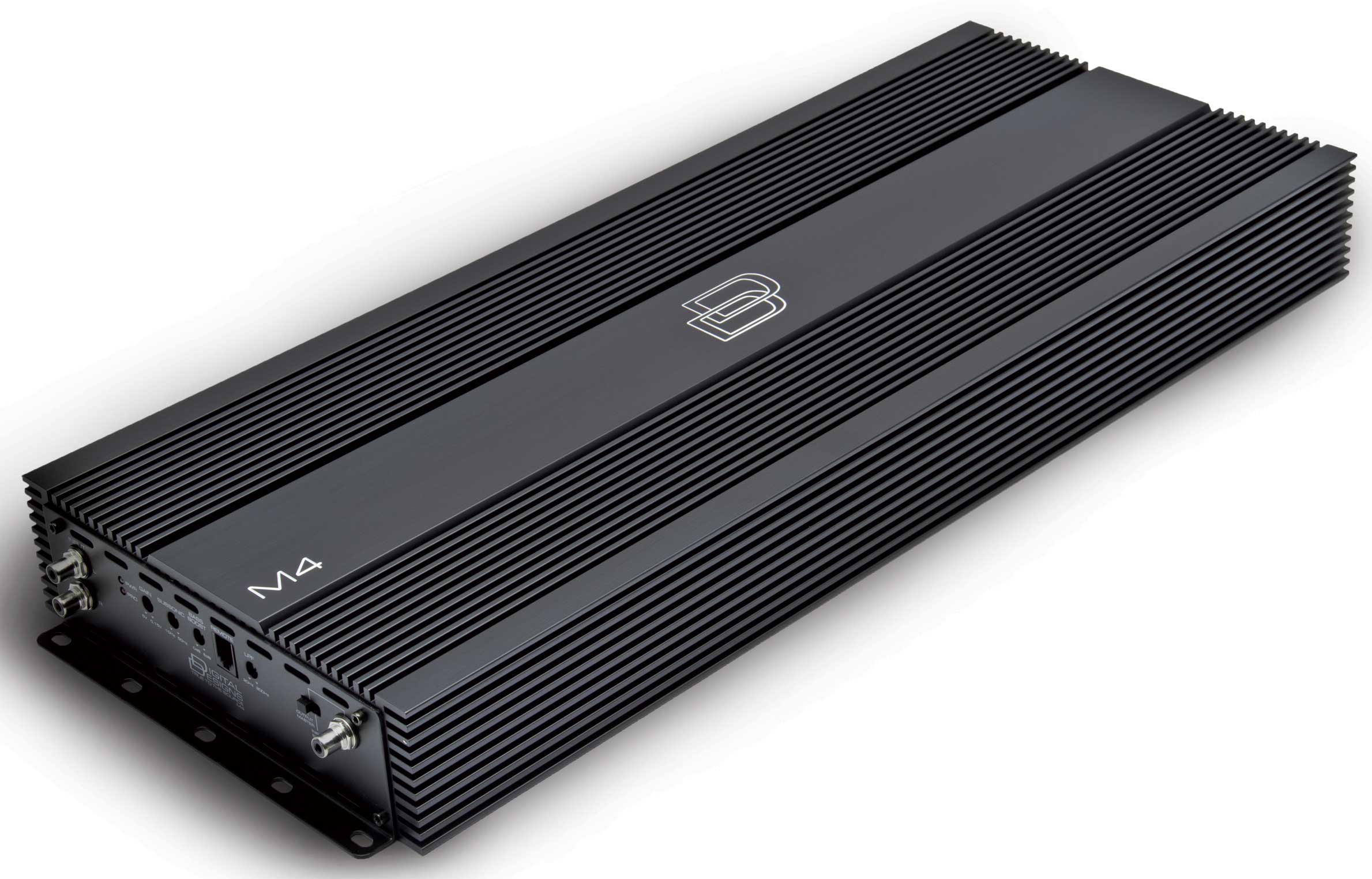
Over the past decade, Digital Designs have earned a reputation for being no nonsense, high-performance products available at reasonable prices. They are also some of the most powerful amplifiers available, hence their popularity and success in the SPL contest arena. This time, we are looking at one of their big monoblock classics, the Digital Designs M4.
Features
The M4 is not a small amplifier by any standard, but the 22x9 inch, 28-pound amplifier is reasonably compact when you consider the prodigious power it develops. The specifications state the M4 will develop 3,200 watts into one ohms at a battery voltage of 12 V. At the usual testing voltage of 14.4 V, it’s sure to exceed that number by a wide margin. And you know an amplifier means business when it comes equipped with dual power connectors that accept 0-gauge cable!
Everything about the amp says it’s a quality piece of kit, from the sturdy and massive power connections to the panel mounted RCA’s and CNC machined logos on the heat sink.
The amplifier has a fairly typical layout, with power and speaker connections at one end and audio inputs and signal controls at the other. The M4 does not use any internal fusing, though a 450 A external fuse is recommended.
Feature wise, the amp includes all the usual functions and controls, with pots for gain, subsonic filter, bass boost and the low-pass crossover. A wired remote level control is also included, incorporating a clip indicator LED.
The controls are nicely designed with logical adjustment ranges. The crossover has a slope of -24 dB per octave and can be set to any frequency between 20 and 200 Hz. The subsonic filter, a critical feature for vented subwoofer designs, ranges from about 12 to 50 Hz, also at -24 dB per octave. Bass boost occurs right around 50 Hz with a maximum boost of 6 dB and a fairly low Q factor, so it has a significant effect over most of the amplifiers pass band.
A single RCA connection sends signal to a second amp in a Master/Slave configuration. The owner’s manual provides clear instructions on how to configure the amp in this mode, but with this much power on tap, it’s going to take stout woofers to handle a pair of these!
Having a look inside the amplifier reveals a serious power supply that uses no less than six individual toroids, and twenty-four high-current MOSFETs, fed by a bank of eight 3300µF capacitors. This baby is built to handle some serious current! The output section is equally as stout, with sixteen high-current N-Channel MOSFETs, and a total of 14,400µF of capacitance. The Class-D carrier is filtered out by a pair of high-current toroidal inductors as well as the customary iron core inductors and corresponding capacitors. The output is controlled by a pair of high-current relays, to minimize the pop noise when turning on and off. All of these components are based on a military-grade FR4 printed circuit board. A combination of traditional through-hole and surface mount parts are found throughout the M4. The build quality looks good and the amp should prove to be a reliable performer.
Normally, I do some critical listening as part of my review process. Just because this is amp is all about power doesn’t mean shouldn’t still sound good. With this much power I need bigger woofers, so I connect a pair of 15 inch, four ohms, 1000 watt woofers for a load impedance of two ohms. No one would expect an amp of this type to sound like my studio reference amplifier, but the M4 does as well as anyone could expect. The amp sounds quite good, with real authority and a seemingly endless amount of power available. It has great ability to control the woofers, providing tight, well defined bass, regardless of how loud I play it. This is one of those amps that leaves a big grin on your face after a two hour listening session. And after that, it’s barely even warm!
On the Bench
As I suspect, the M4 easily exceeds its advertised power rating, with a whopping 4955 watts into one ohms at a battery voltage of 14.4 V and a max current draw of 422 amperes. I measured all performance aspects and the M4 earns a glowing report card. For an amp with this much power to achieve distortion numbers in the 0.06% range at one watt is pretty unusual. I am impressed with the amplifier’s overall efficiency, scoring over 90% at full power into four or two ohms.
Conclusion
The Digital Designs M4 isn’t for everyone. You need a very stout woofer system to handle this beast. Even if you have the power handling, you also need to provide the current to develop that power. If you have a vehicle that’s built to handle these demands, you won’t be disappointed with the performance. The Digital Designs M4 has suggested retail price of $1,599 in the U.S., and slightly more in Canada.
Technical Data
The following power measurements were obtained using industry standard methods. (1 kHZ @ 1.0 % THD+N - Battery voltages shown +/- 0.2 V)
MEASURED PERFORMANCE SPECIFICATIONS
Manufacturers Rated Power Actual Measured Power
@ 1.0 % THD+N @ 12.6 V Battery Actual Measured Power
@ 1.0 % THD+N @ 14.4 V Battery
Not stated x 1 @ 4 Ohms 1193 x 1 @ 4 Ohms 1558 x 1 @ 4 Ohms
Not stated x 1 @ 2 Ohms 2223 x 1 @ 2 Ohms 2897 x 1 @ 2 Ohms
3200 x 1 @ 1 Ohms 3809 x 1 @ 1 Ohms 4955 x 1 @ 1 Ohms
Signal to Noise Ratio referenced to 2 V output.
(CEA-2006A) (1 watt @ 4 ohms) -64.5 dBA
Signal to Noise Ratio referenced to full 4 ohms output. -96.4 dBA
THD+N at 1 watt 4 ohms power 0.065 %
CEA-2006A rated 4 ohms Power (minimum power per channel developed over the entire intended audio bandwidth) 1540 watts
Maximum Efficiency at full 2 ohms power per ch. 90.2 %
Idle Current 2.9 A
Input Sensitivity 161 mV- 6.3 V
Maximum Current @ full power, lowest rated impedance 422.4 A
Frequency Response (-3 dB) 12 Hz – 195 Hz
Subsonic (High Pass) Crossover 12 Hz – 53 Hz
-24 dB/oct
Low Pass Crossover 20 Hz – 200 Hz -24 dB/oct
Bass EQ boost +6 dB @ 50 Hz
Phase Adjustment (degrees of shift @ 100 Hz) N/A
Related Articles
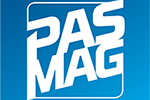 May 2024 Event Calendar
May 2024 Event Calendar
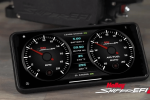 Holley's Sniper 2 EFI Platform Goes Bluetooth
Holley's Sniper 2 EFI Platform Goes Bluetooth
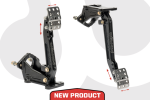 Wildwood Releases Single Pedal Assemblies for Tandem Master Cylinders
Wildwood Releases Single Pedal Assemblies for Tandem Master Cylinders
 All Weather vs All Season Tires: Toyo Celsius II Unboxed
All Weather vs All Season Tires: Toyo Celsius II Unboxed
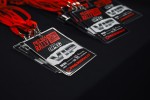 PASMAG's 25th Anniversary: Celebrating with Expanded Tuning365 Tour @ Formula Drift Events and PAS365 Rally Series
PASMAG's 25th Anniversary: Celebrating with Expanded Tuning365 Tour @ Formula Drift Events and PAS365 Rally Series
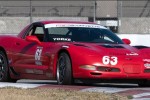 Wilwood Announces Wilwood Corvette Challenge + Speed Ventures Partnership 2024
Wilwood Announces Wilwood Corvette Challenge + Speed Ventures Partnership 2024

